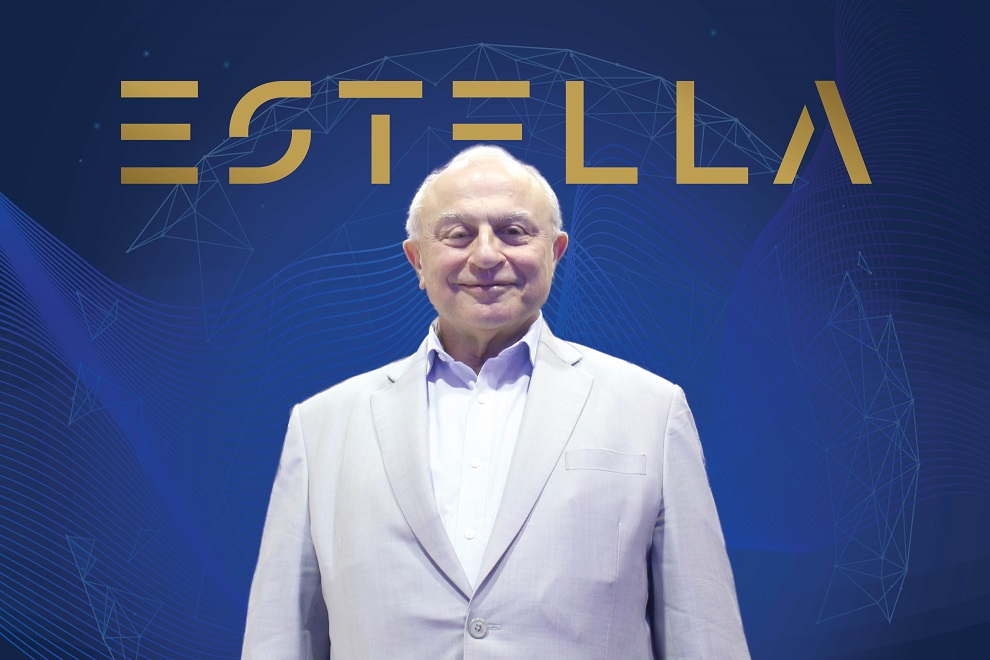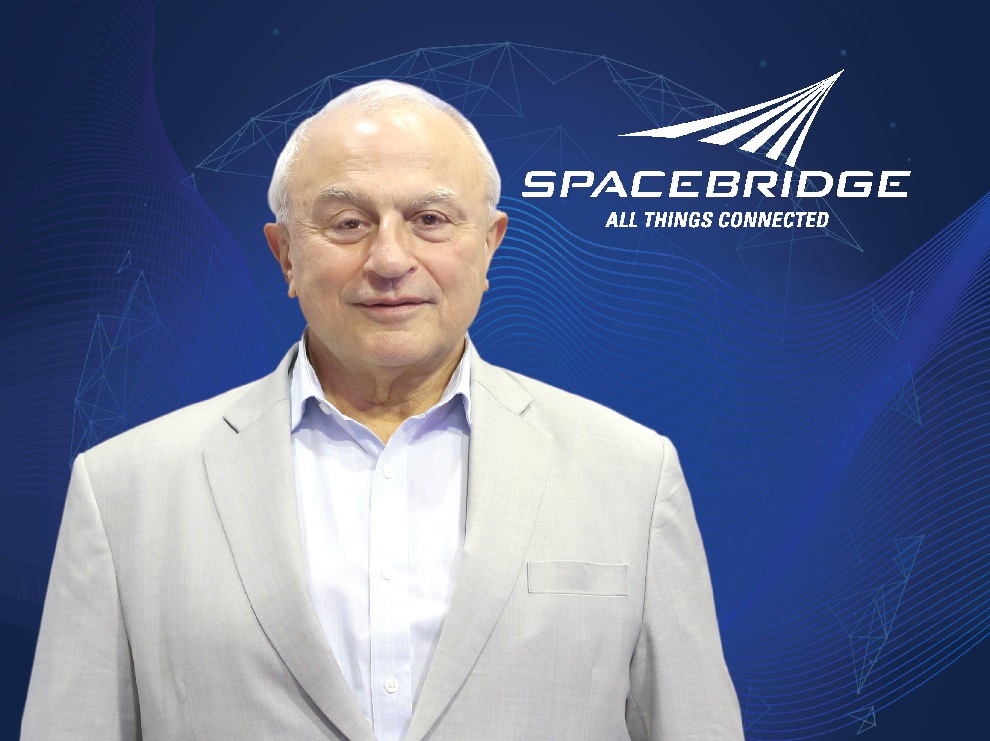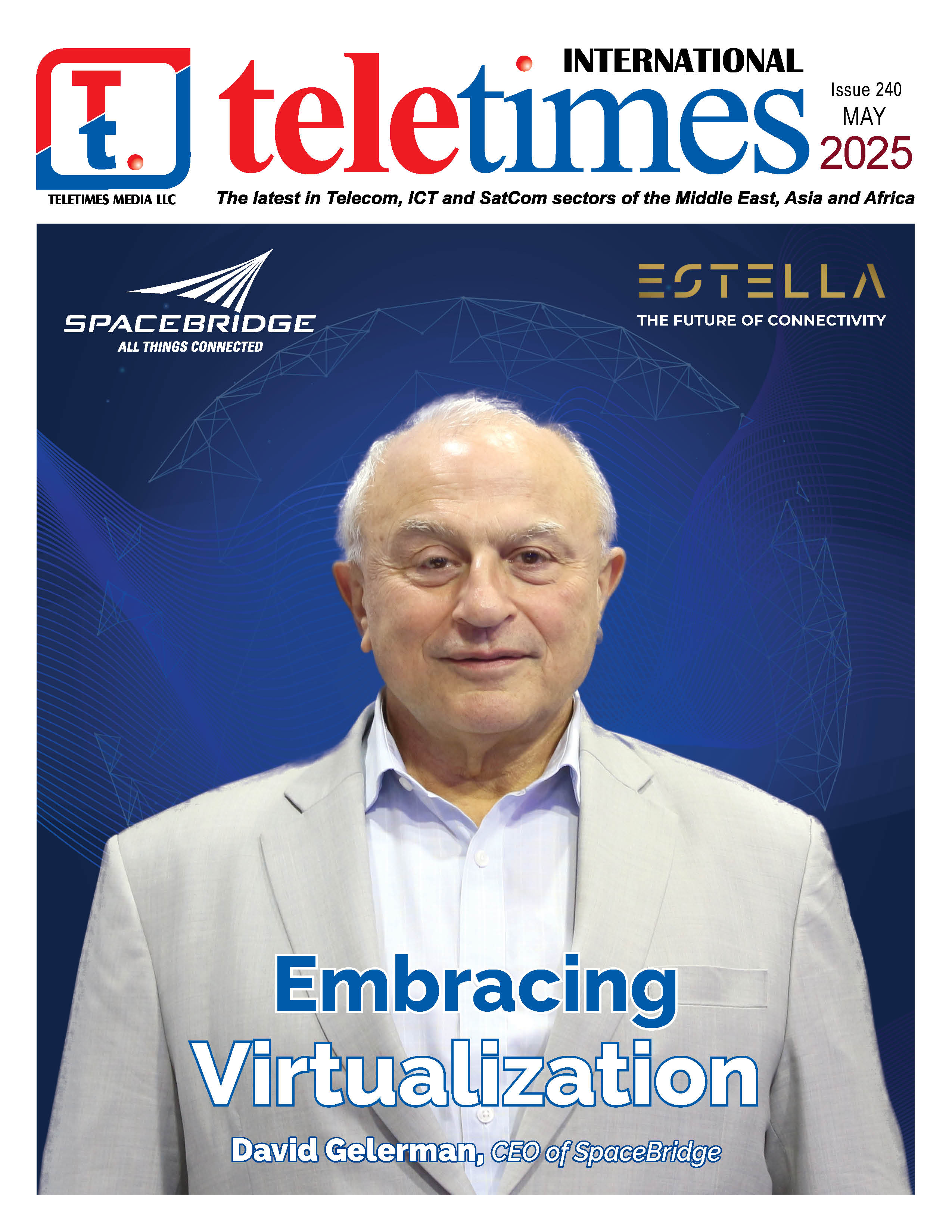David Gelerman, CEO of SpaceBridge highlights the company’s strategic evolution towards supporting intelligent, multi-orbit satellite communications through its cloud-native platform, ESTELLA and shares his perspective on autonomous, AI-driven satellite networks, positioning SpaceBridge as a leader in the next era of connectivity
Gulraiz Khalid: SpaceBridge has been a longstanding player in the satellite communications ecosystem. How has your vision evolved as new technologies and use cases continue to emerge?
David Gelerman: Our vision has always been to stay ahead of the curve by combining innovation with flexibility. As the ecosystem evolves from the rise of NGSO constellations to the increasing demand for real-time data and edge computing, we’ve shifted from traditional VSAT systems to developing intelligent, software-driven, high efficiency platform that could be used for multi-orbit solutions. The goal remains the same: to empower service providers and governments with resilient, efficient, and future-proof connectivity solutions.
Gulraiz: What are SpaceBridge’s current strategic priorities in a landscape that’s shifting rapidly toward hybrid, multi-orbit, and software-defined infrastructures?
David: Our strategic focus is on enabling seamless orchestration across GEO, MEO, and LEO orbits through platforms like ESTELLA. We’re investing heavily in cloud-native architectures, AI-driven network management, and scalable software-defined hubs to support hybrid infrastructures. We’re also ensuring backward compatibility, so customers can reuse the existing User Terminals and transition to the new platform without disruption or additional cost for the H/W.
Gulraiz: How does ESTELLA enable dynamic resource allocation and traffic prioritization across different types of satellite networks?
David: ESTELLA uses intelligent orchestration algorithms that continuously monitor network conditions and user demand. It can dynamically allocate bandwidth, assign priorities based on traffic type, and shift resources between networks in real-time whether it’s GEO, MEO, or LEO and ensuring optimal spectral efficiency vs data transmission requests based on Quality of Service SLAs and performance across the full transponder.

“ESTELLA uses intelligent orchestration algorithms that continuously monitor network conditions and user demand”
Gulraiz: In what ways does ESTELLA stand out from traditional VSAT systems, especially in supporting NGSO constellations, edge computing, and network slicing?
David: ESTELLA is designed as a cloud-native (local or public), software-defined VSAT platform that goes far beyond traditional VSAT. It supports dynamic bandwidth/power allocation and fast beam switching/handovers for NGSO constellations, integrates edge computing capabilities to reduce latency and backhaul needs, and enables network slicing — allowing operators to offer tailored services per user, application, or industry vertical.
Gulraiz: SpaceBridge is known for its waveform and modulation technologies. How do these play a role in improving spectral efficiency, latency, and throughput, particularly for bandwidth-hungry applications?
David: Our 3D-TDMA WaveS with proprietary waveforms and advanced modulations and techniques, such as ACM, DRA, and high-order QAM schemes, are engineered for maximum spectral efficiency. Combined with dynamic bandwidth allocation and low-latency switching, they enable high throughput and reliable service, especially critical for applications like CBH (Cellular Backhaul), ISR (intelligence, surveillance, reconnaissance), and industrial IoT.
Gulraiz: With the increasing adoption of cloud-native architecture and virtualized hubs, how is SpaceBridge adapting or innovating its core platforms?
David: SpaceBridge has fully embraced virtualization, with our platforms now deployable in private and public cloud environments. We’re transitioning key hub functions like NMS, waveform processing, and resource orchestration into containerized microservices, allowing greater scalability, resilience, and remote management flexibility.
“SpaceBridge has fully embraced virtualization, with our platforms now deployable in private and public cloud environments”
Gulraiz: How does SpaceBridge see its role evolving as LEO and MEO constellations become more integrated with traditional GEO infrastructure?
David: We see ourselves as a key enabler of unified, multi-orbit operations. Our technology stack, particularly ESTELLA, is designed to abstract the complexity of managing different orbits and present a seamless experience to the end user. Whether it’s real-time mobility support, load balancing, or inter-orbit routing, we ensure the network behaves as a single intelligent fabric.
Gulraiz: What are the main challenges and opportunities when it comes to enabling 5G NTN (Non-Terrestrial Network) compatibility — and how does ESTELLA contribute to this roadmap?
David: The key challenges include latency management, seamless handovers, and ensuring compatibility with 3GPP standards. ESTELLA is built with 5G NTN readiness in mind, supporting features like beam management, network slicing, and MEC (Multi-access Edge Computing). We’re actively engaged in aligning with 3GPP releases to ensure smooth integration with terrestrial 5G networks.
“The next major leap will be fully autonomous, AI-driven multi-orbit networks that dynamically self-optimize based on user demand, weather conditions, and real-time application needs”
Gulraiz: What do you see as the next big leap in satellite communications, and how is SpaceBridge particularly through platforms like ESTELLA positioned to lead that change?
David: The next major leap will be fully autonomous, AI-driven multi-orbit networks that dynamically self-optimize based on user demand, weather conditions, and real-time application needs. With ESTELLA, we’re already laying the foundation for that future. Its adaptive intelligence, cloud-native design, and integrated edge support position SpaceBridge at the forefront of this evolution.












